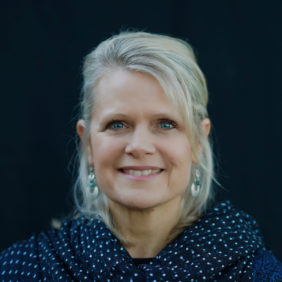In this part three exploring Kadabra’s Inclusion and Belonging Model, we’ll discuss the role of trauma in the model and in culture in general. You can read part one here and part two here.
“Trauma decontextualized in a person looks like personality.
Trauma decontextualized in a family looks like family traits.
Trauma in a people looks like culture [bodies of culture].”
~Resmaa Menakem, My Grandmother’s Hands
The reason we call our inclusion and belong model a trauma-informed model is because we recognize that trauma exists not only in individual leaders and team members, but in the culture of the organization itself.
Trauma can be defined as anything too soon, too sudden, or too much, according to author Resmaa Menakem. It doesn’t mean that a person was abused as a child, or that they experienced intense trauma as an adult (for example, veterans of war). Resmaa says, “trauma is also a wordless story our body tells itself about what is safe and what is a threat.”
Trauma is the body’s response to real or perceived threats to its safety. It will rise up to keep us safe from these perceived threats, but that often inhibits our ability to respond in conscious ways.
It’s important to understand that this big word, trauma, shows up in subtle and seemingly inconsequential ways. But they’re not inconsequential at all. They impact our ability to relate authentically to others.
In our model, trauma shows up in three ways:
For the Individual Looking Inward
For the individual looking inward, trauma keeps a person from embracing all the parts of themselves. When we don’t embrace all the aspects of ourselves, it’s impossible to fully accept others.
World-renowned psychiatrist Carl Jung called this “the Shadow.” The Shadow is where all the parts of ourselves that we, or primary influencers in our life, consider undesirable.
A common example is “selfish.” It’s generally considered an undesirable trait in our culture. Nobody wants to consider themselves selfish, so when we see someone else behaving selfishly, we judge them.
However, it’s important to note that there are times when being “selfish” is absolutely essential. We have to take care of our own selves first, or we won’t be able to fully support others. It’s like the flight attendants always tell us, “Put your own oxygen mask on before helping others.” We can’t create a culture of belonging if we don’t want to own all the parts of ourselves.
For the Individual Looking Outward
For the individual looking outward, trauma will create less than desirable reactions to team members who remind the body of the original person who inflicted the trauma.
One example: growing up, I repeatedly received the message that I had to get straight As in school. That’s not necessarily a hurtful message in and of itself. But the underlying and unspoken message behind the message was, “If you’re not perfect, YOU are not good enough.” My parents never intended to install the underlying message, but that’s how it was received in my young body.
In my first job out of college, I had a boss who reinforced that message repeatedly. I did not respond well to what she thought was encouragement. My body would go into “freeze” mode whenever she questioned a decision I made, and that limited my ability to make smart, informed decisions. When the body responds to a perceived threat, the brain gets hijacked by the limbic system and the higher functioning of the brain gets temporarily sidelined. In other words, we simply can’t show up as our best.
For Everyone Else
The WE aspect of the model that looks at all stakeholders, as well as the policies and governance of the organization, trauma is insidious. It is embedded in common cultural symptoms like perfectionism, fear of open conflict, defensiveness, and either-or thinking.
These are actually symptoms of a white supremacy culture. These symptoms prevent us from being able to show up fully and authentically. They create layers and levels of unconscious bias that prevent all the best talent from rising to the top, based on gender, ethnicity, and other marginalizing factors.
And because of how these symptoms impact us as individuals, they prevent the system itself from functioning in an optimal way. Because at the end of the day, a system is always and only the collection of individual behaviors, attitudes, and the policies they create.
We are excited and hopeful to see that the subject of trauma has been getting more attention lately. We believe that a critical part of the way forward involves acknowledging, addressing, and healing the trauma of our culture.


 Heather Leavitt-Martinez (she/her/hers) – Senior Product Manager
Heather Leavitt-Martinez (she/her/hers) – Senior Product Manager Wendy Ryan (she/her/hers) – CEO
Wendy Ryan (she/her/hers) – CEO Shawn Bunger (she/her/hers) – Senior Consultant
Shawn Bunger (she/her/hers) – Senior Consultant Crystal Whiteaker (she/her/hers) – Senior Consultant
Crystal Whiteaker (she/her/hers) – Senior Consultant Gail Finger (she/her/hers) – Senior Consultant
Gail Finger (she/her/hers) – Senior Consultant Monica Silkwood (she/her/hers) – Director of Operations and Experience
Monica Silkwood (she/her/hers) – Director of Operations and Experience Johanna Lyman (she/her or they/them) Senior Consultant
Johanna Lyman (she/her or they/them) Senior Consultant Sherri Horan (she/her/hers) – Senior Consultant
Sherri Horan (she/her/hers) – Senior Consultant